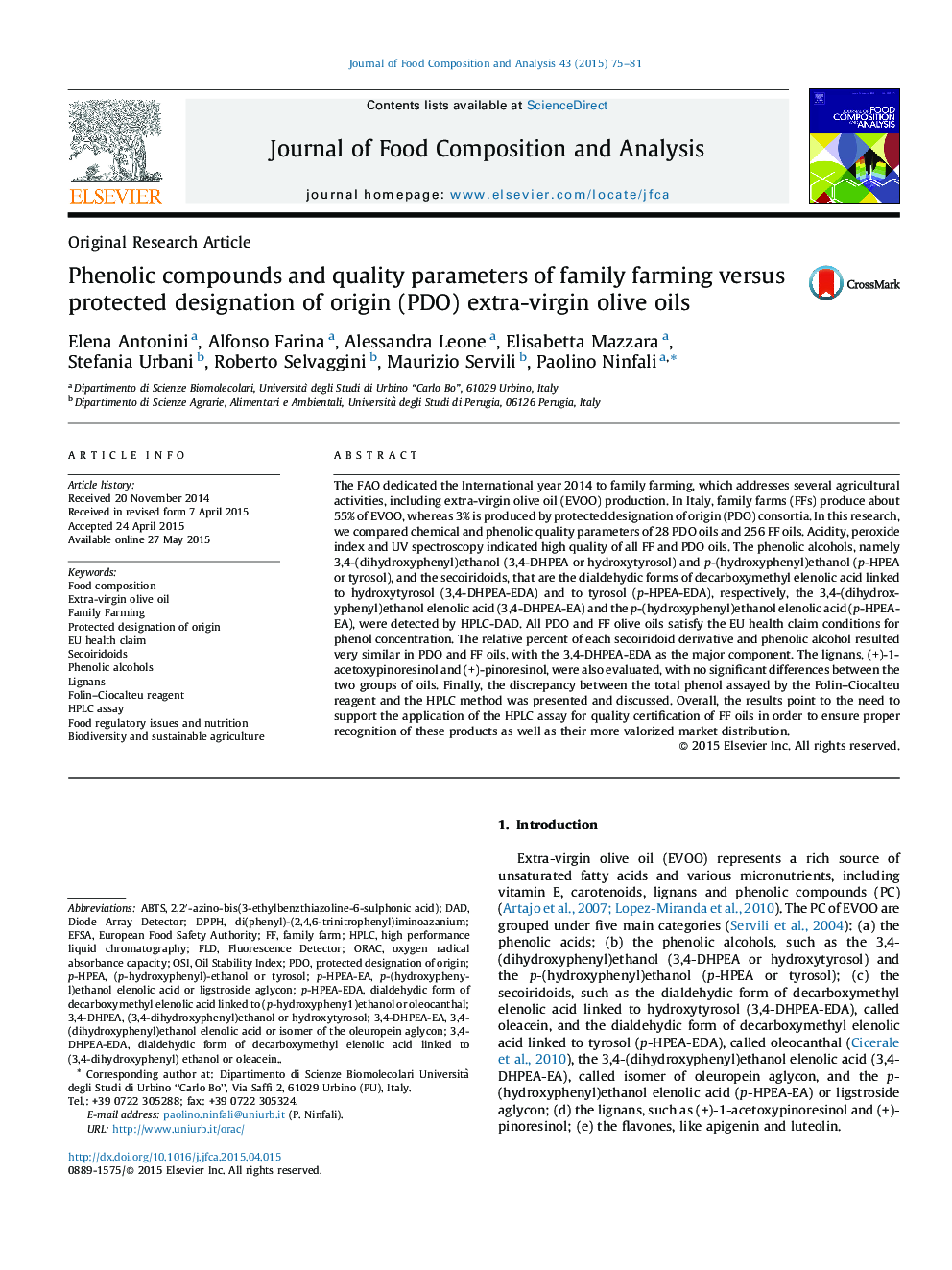| کد مقاله | کد نشریه | سال انتشار | مقاله انگلیسی | نسخه تمام متن |
|---|---|---|---|---|
| 1218076 | 1494499 | 2015 | 7 صفحه PDF | دانلود رایگان |

• The EU regulation 432/2012 for health claims of olive oil phenols was applied.
• A survey of Italian family farming olive oil quality was performed.
• The phenolic compounds of family farming oils were compared with PDO oils.
• All PDO and family farming oils reached the quality level for the EU health claim.
• Family farms should receive institutional support for oil quality certification.
The FAO dedicated the International year 2014 to family farming, which addresses several agricultural activities, including extra-virgin olive oil (EVOO) production. In Italy, family farms (FFs) produce about 55% of EVOO, whereas 3% is produced by protected designation of origin (PDO) consortia. In this research, we compared chemical and phenolic quality parameters of 28 PDO oils and 256 FF oils. Acidity, peroxide index and UV spectroscopy indicated high quality of all FF and PDO oils. The phenolic alcohols, namely 3,4-(dihydroxyphenyl)ethanol (3,4-DHPEA or hydroxytyrosol) and p-(hydroxyphenyl)ethanol (p-HPEA or tyrosol), and the secoiridoids, that are the dialdehydic forms of decarboxymethyl elenolic acid linked to hydroxytyrosol (3,4-DHPEA-EDA) and to tyrosol (p-HPEA-EDA), respectively, the 3,4-(dihydroxyphenyl)ethanol elenolic acid (3,4-DHPEA-EA) and the p-(hydroxyphenyl)ethanol elenolic acid (p-HPEA-EA), were detected by HPLC-DAD. All PDO and FF olive oils satisfy the EU health claim conditions for phenol concentration. The relative percent of each secoiridoid derivative and phenolic alcohol resulted very similar in PDO and FF oils, with the 3,4-DHPEA-EDA as the major component. The lignans, (+)-1-acetoxypinoresinol and (+)-pinoresinol, were also evaluated, with no significant differences between the two groups of oils. Finally, the discrepancy between the total phenol assayed by the Folin–Ciocalteu reagent and the HPLC method was presented and discussed. Overall, the results point to the need to support the application of the HPLC assay for quality certification of FF oils in order to ensure proper recognition of these products as well as their more valorized market distribution.
Journal: Journal of Food Composition and Analysis - Volume 43, November 2015, Pages 75–81